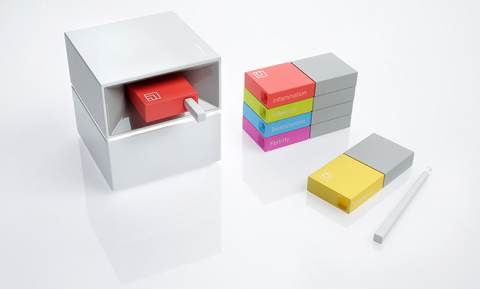Cue health tracker brings molecular-level testing to iOS
According to Cue cofounder and Chief Product Officer Clint Sever, much of the three-year R&D period was spent fusing the two core technologies into an appealing consumer device. Aside from the in-house biosensors, the bespoke microfluidic system allows Cue to handle small amounts of human sample in a way that is both powerful and cost effective.
"Taking these fundamental laboratory principles and technologies and packing them into a system anyone can use was really the key challenge in developing the product," Sever said.
On the hardware side, Cue is built on a modular platform with a small rectangular device serving as a type of base station that accepts single-use cartridges for various molecular testing. Weighing in at less than a pound, Cue is portable and can be taken to the gym or office for on-the-go readings.
Each cartridge tests for a different indicator by sampling saliva, blood or fluid from a nasal swab with an included sample wand. The base station automatically determines when a sample cartridge and sample wand are present, processes the biological sample and sends the resulting digitized data to an iPhone via Bluetooth 4.0. Charging is accomplished via the Qi wireless standard.
The Cue app then aggregates test data into a timeline called Life Feed — or broken off into dedicated sections for each indicator — for easy viewing or to share with friends and family members. In addition, the app can also use collected data to pull down food and exercise recommendations from the cloud. For example, if a user's Vitamin D levels are low, Cue may suggest a smoothie or some fruit and can schedule the task in a user's calendar.
Mikey Campbell

